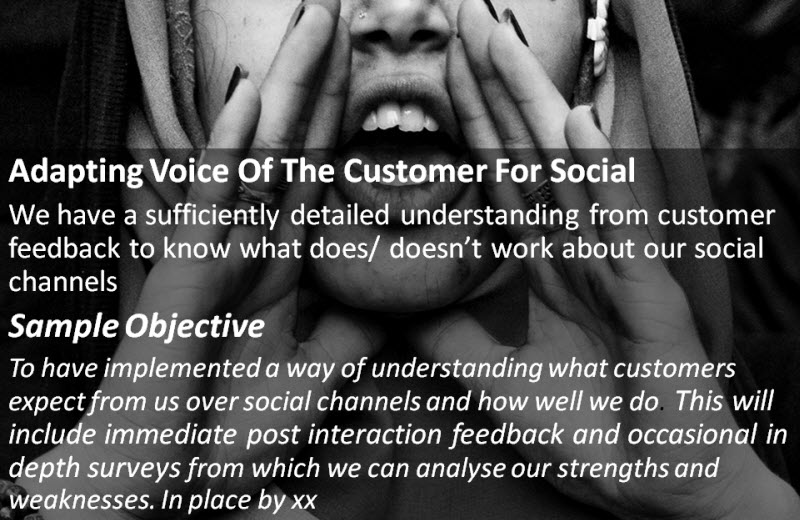
Knowing your impact in social customer service makes a lot of sense. Everyone else gets to glimpse symptoms of your performance every time they visit one of your social channels. So why not make sure you get the news first?
In fact, since social engagement can ignite like ‘digital gunpowder’, social customer service needs a near real time feedback loop as part of your overall risk management strategy. All decent multi-channel feedback vendors will offer this.
For many reasons, ‘voice of the customer’ (VoC) is a growing beast these days. CX professionals often make it a centrepiece of their improvement strategy. Quite rightly. Of course there are a few tricks to making it all work which are worth knowing.
Back in the day, customer insight was mainly gathered via surveys. These still remain useful for occasional snapshots. For instance to help explore the overall state of relationship or to ask customers for views about products, pricing and other opinion based topics.
However, other techniques are better suited to understanding the emotional dimension of a specific incident, such as a service interaction or a purchase. This needs tapping into as close to the event as possible before the experience is converted into memory.
So what are your choices?
As previously mentioned there is a thriving industry in post interaction feedback solutions. These add value by:
- Automating the analysis of both the qualitative and quantitative data being collected
- Providing performance dashboards which CX improvement teams and social engagement teams can learn from
- Providing a ‘next action’ workflow so the organisation can rapidly respond as and when needed
Of course the issue with these solutions is customer adoption. When effectively implemented, they will generate significant volumes of response. But we live in a time poor, feedback intensive world, so it becomes hard to motivate customers.
Then there is a class of solution that can scale to 100% of all interactions and does not need extra customer effort as input. These are the customer analytic solutions which can tap into voice and text interactions and mine them for sentiment, trends, root causes and improvement tracking.
These will compliment the ‘real time’ feedback solutions in a mature VoC. Social listening platforms have some of the capability while more traditional contact centre solutions are stronger in other respects.
As a final point, it is worth remembering that the whole purpose of customer feedback is to discover what you do not yet know, so you can improve. Sadly many organisations get into a rut, having tied compensation with achievement levels and start to care more about scores than learning and improving. Avoid that trap.
Look out for the final competency on ‘Becoming Fanatical About Service Failures‘.




